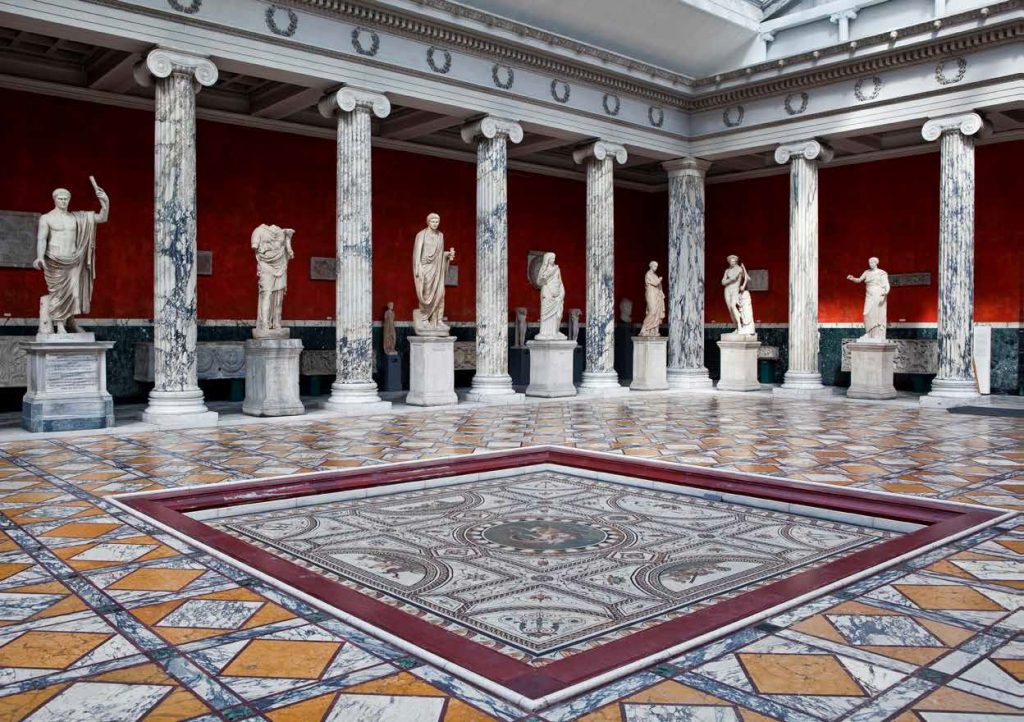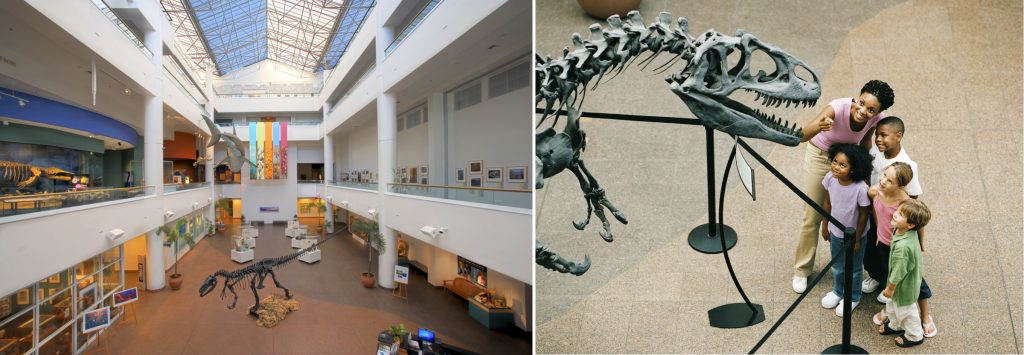by Himanshu Khurana — This article originally appeared in the May/June 2019 issue of FMJ
Museums face the daunting task of preserving and protecting collections of artifacts and objects of artistic, cultural, historical or scientific importance while making those collections safely accessible to the public, researchers and others.
These collections face a wide range of threats from theft to fire, and even a minor fluctuation in temperature or humidity levels can harm or destroy fragile objects. Meanwhile, they are also responsible for providing a safe, manageable environment for their staff and visitors. And they must do all of this in a sustainable, cost-efficient way.
As a result, many museums have come to depend on advanced technologies to manage their facilities. These technologies include integrated building management to control the environment, digital video management to monitor activity and identify threats, data capture and analysis to manage crowds and fire detection systems to protect their facility’s collections and occupants.
Here are some of the latest technologies that help museums monitor and control environmental conditions and enhance security for their collections.
Integrated Building Management Systems
To maintain optimal environments for temperature and condition-sensitive museum pieces, integrated building management systems control, continuously monitor and improve the operations of HVAC systems. They can also save money for environments that require a lot of energy usage.
The San Diego Natural History Museum, which exhibits everything from precious gems to dinosaurs to presentations on the human genome, wanted to introduce precision climate control in key exhibit areas. This would help them gain energy efficiency and integrate systems to a common platform to access energy management data.
They accomplished this by using a web-enabled building management system that integrated existing systems into a single interface. By evaluating their needs and moving to a newer system, they generated energy savings, improved building management and reduced maintenance costs. In just one example of how technology improved the facility’s ability to meet its mission, a key factor in enabling the museum to host the Dead Sea Scrolls exhibit was its integrated building management system’s ability to allow the exhibit managers to verify that their facility had precision control over the temperature and humidity.
Along with lowering the risk of damage to artifacts, an increased ability to monitor and create optimized temperatures helps museums better support environmental sustainability strategies. It also creates a more comfortable environment for their visitors.
By taking enterprise-wide control of HVAC and mechanical systems, facilities can trend energy usage, predict peaks and decrease wastage. The ability to continually make educated improvements to their environments helps museums save energy consumption and reduce costs.
Digital Video Management
Digital video management enables museum personnel to quickly identify and address threats as they’re happening — whether it’s a thief or a water leak.
Monitoring and control capabilities are now easily added to an integrated building system and can include devices such as closed-circuit television (CCTV) and dome cameras. These systems capture surveillance footage through the entire museum as well as provide notification alarms when breaches occur. As an added benefit, the cameras contribute to a facility’s energy conservation efforts by recording when they sense movement and conserving energy at other times.
A digital video management system can include a scalable, IP-based digital video system that captures and stores video from the facility’s cameras for personnel to retrieve easily when reviews of certain areas are needed.
To go a step further, facilities can take advantage of advanced technology that combines digital video management with automation, analytics and visualization. This type of system can provide museum personnel with a holistic view of all video feeds, alarms and notifications of possible threats from a singular platform. A user-friendly design empowers users to react quickly without the need of advanced training.
Through an array of security officers, cameras, alarm points, card readers and an RFID system, personnel are able to monitor artifact movement and associated environmental conditions, thereby keeping them safe from theft or environmentally harmful conditions.
Data Capture for Maintenance
In a connected building, data is captured and analyzed in near real-time. Building systems can monitor the flow of traffic, which allows staffing or security levels to be adjusted in different areas as needed.
Some museums offer mobile apps on smartphones to gain intelligence on visitors’ locations and other useful data. These apps can help visitors navigate the museum while enabling museum officials to analyze the resulting data to gain insight into foot traffic and flow.
For example, museum officials can use this information to identify high-traffic areas, which may need more staffing, security, or other forms of attention. This smart building approach affords many opportunities to museums to harness data to enhance the experiences of staff and visitors, as well as helping it to deploy staffing resources efficiently.
Similarly, properly analyzed data can help deploy maintenance resources more efficiently. With the help of connected technology, museums can utilize data to inform effective predictive maintenance. Moving to a flexible maintenance schedule that is focused on maintaining overall performance, rather than ensuring a specific asset was visited a pre-determined number of times, can be more efficient and cost-effective.
For example, at the Ny Carlsberg Glyptotek museum in Copenhagen, better-informed decision making and the move to a predictive maintenance strategy has freed up around 20 percent of maintenance capacity, which is now used to address other site requirements. This makes the maintenance team even more productive and generates greater value from the same level of investment.
By using data to effectively optimize staffing and prioritize maintenance tasks, museums are able to boost energy savings, increase the longevity of their systems, and ultimately, increase operational performance and efficiency to impact their bottom line.
Deploying Fire Detection
Fire emergency detection and evacuation are extremely critical to museums. Fire detection systems enable museums to protect their irreplaceable collections as well as their staff and visitors. Here are two examples of how a smart, centrally managed system can ensure that the museum protects its collections, staff and visitors from harm.
- A smart fire emergency detection with central management and evacuation can help to ensure a risk-free environment for exhibitions and museumgoers. High-tech fire alarm systems provide system integration with low operation costs and allow for customization for a museum’s future needs. These systems also help with evacuations by emitting a distinct sound (like white noise) that can be heard across all frequencies of the human hearing range and does not conflict with traditional fire alarm audible devices. This technology helps to guide visitors and staff to the nearest exit, reducing evacuation times in a museum by up to 75 percent.
- To protect irreplaceable national treasures and works of art from fire, facility managers can also deploy an early smoke detection system that is hundreds of times more sensitive than a traditional point detector. Even when smoke has been diluted by a draft blowing through the building, or by air conditioning, it will be detected, and an alarm will be raised. To prevent false alarms and unnecessary panic among visitors, the alarm levels are adjustable.
Museums are charged with managing their spaces, protecting their precious pieces, reducing costs and improving the visitor experience. Advanced technology helps accomplish these ends by enabling them to create an environment that is safe and secure for its collections, staff and visitors while also being sustainable and cost efficient to maintain. The power of connected technology helps museums all over the world continue to preserve our cultural heritage.
Bio
Dr. Himanshu Khurana is Honeywell Building Solutions Director Engineering and Global Innovation Leader. In this role he drives product innovation with new software architectures, cloud, mobile and analytics technologies to realize new IoT solutions and experiences in connected buildings. Prior to this role he led research and development in Honeywell research labs. He has served on the Cyber Security Research Alliance (CSRA) Board of Directors, an industry consortium focusing on game-changing cybersecurity research. Before joining Honeywell, Himanshu was at the University of Illinois and led research projects in internet and smart grid systems. He obtained his master’s degree and doctorate in computer engineering from the University of Maryland-College Park.


